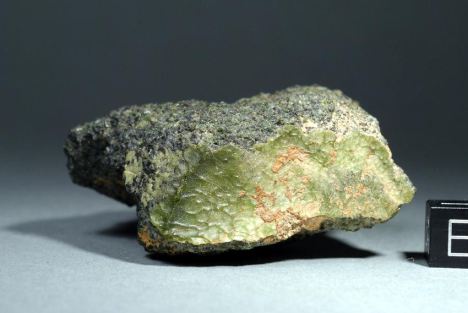Last year, a green meteorite known as NWA 7325 was discovered in Morocco. Part of a group of 35 recovered meteorites, NWA 7325 is believed to be the first known meteorite from Mercury. Found by Anthony Irving, he and his team dated the space rock to be about 4.56 billion years old.
There are a few important characteristics about NWA 7325 that give Irving reason to believe that the meteorite is from Mercury. First, scientists believe that Mercury’s surface is very low in iron. NWA 7325 is also low in iron, suggesting that the rock must hail from Mercury or another planet with a similar makeup.
Second, meteorites tend to have chemical characteristics distinct to the larger planets or asteroids that they come from. Having studied numerous rocks from Mars and other major asteroids, Irving has found that NWA 7325 has a unique chemical makeup, eliminating the possibility that it came from Mars or other previously studied asteroids.
Finally, NWA 7325 has a magnetic intensity—magnetism passed from a cosmic body’s magnetic field to the rock—that is lower than that found on any previously discovered meteorite. Data recently received from NASA’s Messenger spacecraft indicates that the magnetic intensity of Mercury closely resembles that of NWA 7325.
The discovery of NWA 7325 has been an exciting opportunity for scientists. As potentially the first meteorite to be studied from Mercury, the rock can provide vast amounts of insight into the solar system’s innermost planet that may otherwise be unattainable.
Filed under: Current Events, Newsletter, Science Facts | Tagged: Mercury, Meteorite, NWA 7325, Outer Space, Space Rock | 2 Comments »








